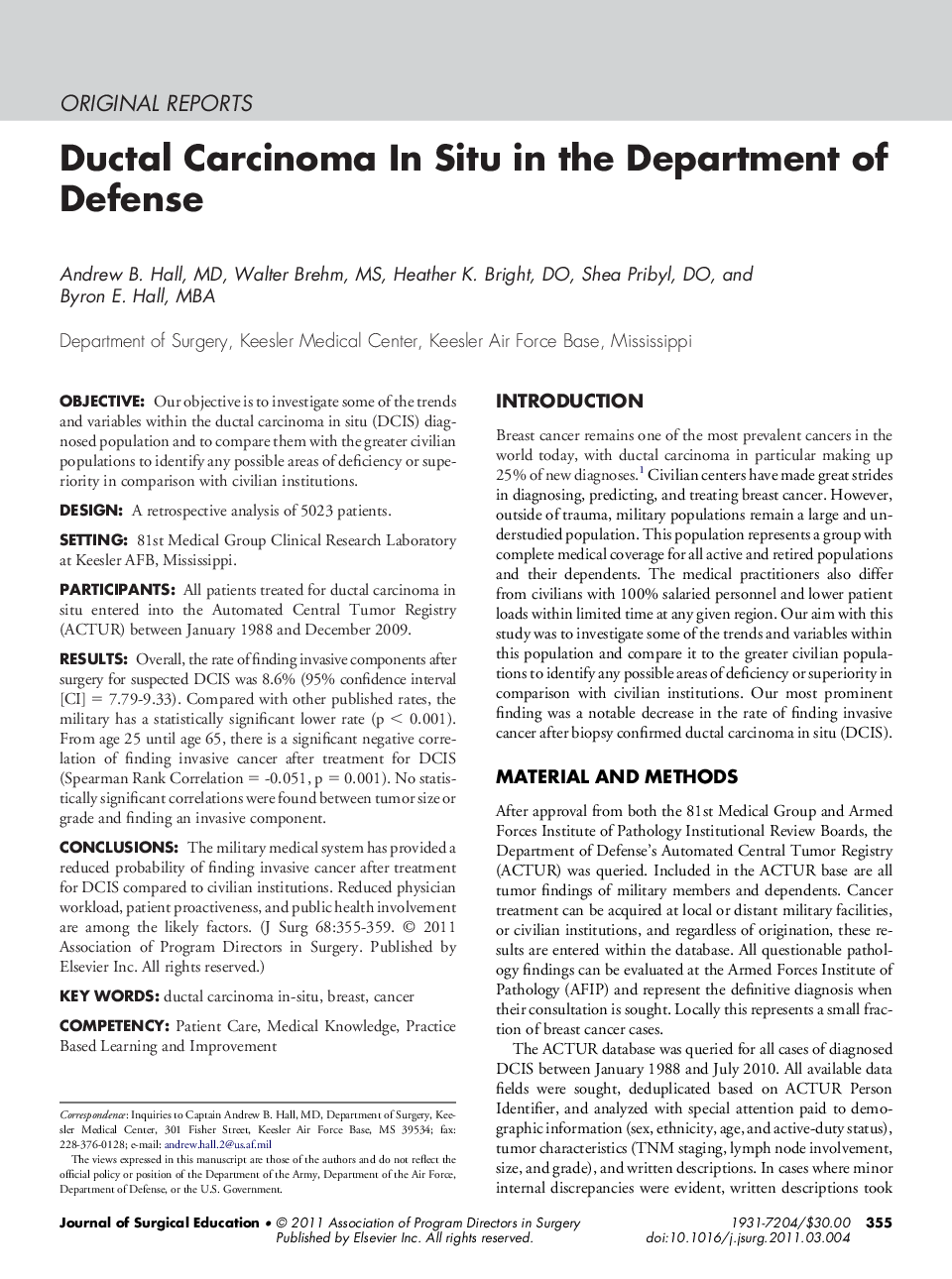| Article ID | Journal | Published Year | Pages | File Type |
|---|---|---|---|---|
| 4298492 | Journal of Surgical Education | 2011 | 5 Pages |
ObjectiveOur objective is to investigate some of the trends and variables within the ductal carcinoma in situ (DCIS) diagnosed population and to compare them with the greater civilian populations to identify any possible areas of deficiency or superiority in comparison with civilian institutions.DesignA retrospective analysis of 5023 patients.Setting81st Medical Group Clinical Research Laboratory at Keesler AFB, Mississippi.ParticipantsAll patients treated for ductal carcinoma in situ entered into the Automated Central Tumor Registry (ACTUR) between January 1988 and December 2009.ResultsOverall, the rate of finding invasive components after surgery for suspected DCIS was 8.6% (95% confidence interval [CI] = 7.79-9.33). Compared with other published rates, the military has a statistically significant lower rate (p < 0.001). From age 25 until age 65, there is a significant negative correlation of finding invasive cancer after treatment for DCIS (Spearman Rank Correlation = -0.051, p = 0.001). No statistically significant correlations were found between tumor size or grade and finding an invasive component.ConclusionsThe military medical system has provided a reduced probability of finding invasive cancer after treatment for DCIS compared to civilian institutions. Reduced physician workload, patient proactiveness, and public health involvement are among the likely factors.
